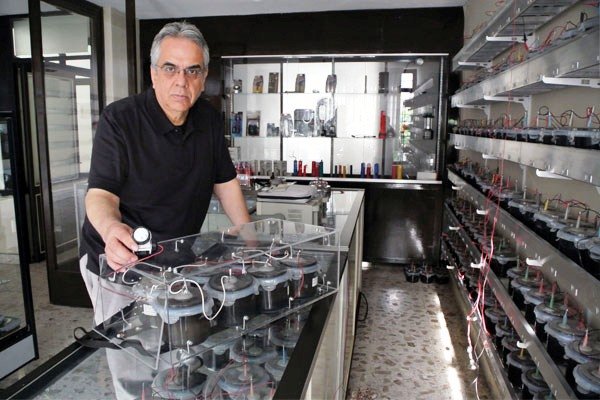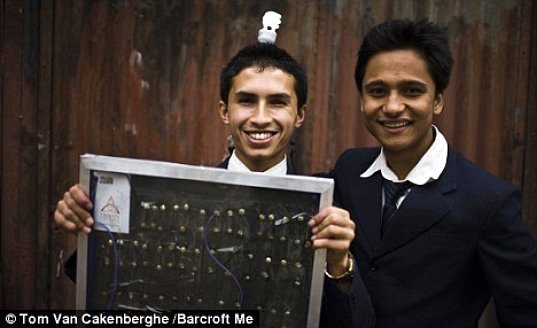
More technological innovations are emerging in the world, and it will allow us to supply ourselves with energy in a cleaner and renewable way over the years. Today is the turn of a key substance in the living beings: The Melanin.
Melanin is a pigment found in the skin, hair, the epithelium surrounding the retina, the spinal cord and other areas of the body. This pigment determines the color of the skin, hair, and iris of the eyes.
The researchers says: "Melanin, which is chemically known as polyhydroxyindole, captures photon energy and transforms it into chemical energy. This process, called human photosynthesis, is a chemical reaction that was not known in humans, only in plants".
In the process of human photosynthesis, melanin is the equivalent of human chlorophyll. Melanin can dissociate the water molecule, as chlorophyll does in plants. Thus, the first reaction in plant and human life is the same: the transformation of light energy into free chemical energy.
The process of generating electrical energy consisted in obtaining at room temperature and by means of natural or artificial light as the only source of energy, the splitting of the water molecule; thus hydrogen and oxygen atoms were obtained, as well as high-energy electrons; or else, hydrogen and oxygen atoms were united and as a result water and electrical current were obtained with melanin, the main, or central electrolyzing material.
Electrical inventions created from melanin:
A powerful battery:
Dr. Arturo Solís Herrera, a Mexican surgeon from the IPN School of Medicine and an ophthalmologist from the UNAM, and his team of collaborators have created a battery called Bat-Gen.
Bat-Gen, says the researcher, accumulates and generates its own energy using melanin. Its duration is unlimited, and its benefits are numerous. “For the first time in the history of mankind, with Bat-Gen we can light up the planet without heating it,” he says.
According to research, melanin captures the energy of photons, which are the elementary particles of electromagnetic radiation, and with that extracts hydrogen from water. The time it takes to collect the energy needed to split the water molecule is equivalent to 3×10-12 seconds, and the reaction in melanin is reversible.

Solis Herrera's prototype consists of a photoelectrochemical cell with a vessel in which melanin is deposited. Each cell contains 500 ml of melanin, which, when connected to a voltmeter, indicates between 300 and 470 millivolts. With 10 cells it is possible to light an LED lamp.
The researcher assures that the first luminaire that was lit eight years ago is still in operation, and adds that “with each Bat-Gen it is possible to light an LED luminaire and its duration is thousands of years”.
The results show that 1 thousand liters of melanin provide 10 thousand V and 10 A. However, these figures can be modified depending on the size of the cells, the way they are connected to each other, the size, and arrangement of the electrodes, and by modifications in the formula of the central substrate, among other factors.
Solar panels without silicon.
Eighteen-year-old Malin Karki a resident of Nepal, uses human hair to replace silicon in solar panels. A student at a school in Kathmandu, he began reading a book by Stephan Hawking that discusses ways to create static energy with hair. Based on this principle, Karki realized that melanin was a key factor in energy conversion, and could possibly serve as a substitute conductor for silicon. He and 4 other classmates worked on a prototype, and discovered that they could charge a cell phone or a battery for lighting.

The panels created are 15 cm wide and can produce 9V or 18W of power, they cost around 30 euros. However; Karki thinks that if they were mass-produced, it would cost half as much. In Nepal, human hair costs around 25 cents for half a kilo and can last for several months. The hair is also basically a renewable resource and can be replenished by the owner of the solar panel without any problems, as it wears out in the process. This low-cost, low-tech device could be a revolutionary step in the production of cheap solar energy.

Definitely, in the future, these innovative technologies will help to reduce the cost of solar energy and give thousands of people in developing countries access to affordable renewable energy.
Do you think that this type of project could be developed in your country as part of the social / economic development of the region?

Congratulations @aluskab888! You have completed the following achievement on the Hive blockchain and have been rewarded with new badge(s) :
Your next target is to reach 60 posts.
Your next payout target is 100 HP.
The unit is Hive Power equivalent because your rewards can be split into HP and HBD
You can view your badges on your board and compare yourself to others in the Ranking
If you no longer want to receive notifications, reply to this comment with the word
STOPTo support your work, I also upvoted your post!
Check out the last post from @hivebuzz:
Thank you for your post, I found it super interesting. 😊
Source of plagiarism
There is reasonable evidence that this article has been spun, rewritten, or reworded. Posting such content is considered plagiarism and/or fraud. Fraud is discouraged by the community and may result in the account being Blacklisted.
Guide: Why and How People Abuse and Plagiarise
If you believe this comment is in error, please contact us in #appeals in Discord.